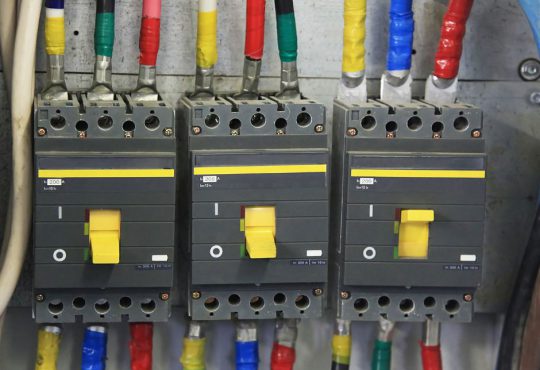
Latest Development in SecOps
Using case management systems is one of the most recent advances in SecOps. These systems record past occurrences in the company’s history and serve as a hub of communication between SOC operators and affected portions. They also provide an event audit trail. This article will go through applying case management systems in the workplace and how they can benefit your company. We’ll also review how a case management system can help you boost security by removing manual processes.
Security orchestration automation and response (SOAR) solution
The SOAR solution speeds up and simplifies crisis response. SOAR minimises manual processes with centralised data management, freeing up SOC analysts for higher-order responsibilities. It can also provide reports to assist SecOps teams in identifying security threats and trends. SOAR also provides SecOps teams with a centralised command centre from which they can interact and share information. Unlike traditional techniques, which are time-consuming, inefficient, and prone to errors, SOAR uses the latest security tools.
While SOAR is growing more popular in organisations, it is far from ideal. SOAR and SIEM are frequently mutually beneficial. SOAR enables users to identify and respond to network faults when implemented fast. SOAR also allows security personnel to observe how security issues influence their firm’s data. SOAR is an efficient and effective method of increasing network security. It cannot, however, promise quick security.
SOAR is a multi-layered security platform that integrates several IT and security systems to improve integration and minimise disruption. A SOAR system enhances the context of data and automates repetitive operations. SOAR can minimise the average time between threat detection and response by automating these operations. Finally, a faster response time reduces the impact of threats. SOAR also connects data from numerous security platforms, enhancing the analysis and sharing of threat intelligence.
D3FEND MITRE
The National Security Agency is supporting a project to create defensive countermeasures, which the non-profit MITRE will disseminate. D3FEND is a project that will supplement the current ATT&CK foundation. The MITRE project seeks to lay the groundwork for discussions about cybersecurity defences and to bring together security-focused communities. A preliminary framework for characterising defensive capabilities and technologies is also included in the project.
MITRE’s D3FEND technical whitepaper is meant to assist enterprises in evaluating their security plans. It establishes a uniform language for describing defensive cyber technologies, making future upgrades easier to adopt.
The framework has established itself as the de facto standard for security operations centres, allowing cyber security analysts to examine known attackers and improve their security posture. The paradigm also allows SecOps to consider strategy and coherence when responding to cybersecurity threats. MITRE’s ATT&CK framework is one of several new MITRE efforts. MITRE has a long history of creating security standards and tools for enterprises, and this latest innovation will help organisations stay one step ahead of the competition.
VMware connects your important control points to improve SecOps efficiency.
Security must be incorporated throughout your entire architecture when attempting to secure your data centre or cloud environment. You may shorten the time it takes from discovery to resolution by linking your essential control points with the correct tools. VMware security software can assist you in this endeavour by offering authoritative context, depth, and accuracy of data collecting. The benefits of leveraging VMware security solutions to streamline SecOps throughout your organisation will be discussed in this article.

Instruments for monitoring
SOC operations are a complex procedure that necessitates teams of professionals to respond swiftly to attacks, discover weaknesses, and safeguard systems against threats. Managers can use monitoring tools to monitor all systems 24 hours a day, seven days a week. SOC teams must also be taught to stay current on emerging threats and vulnerabilities. The most recent advancements in monitoring tools allow managers to stay on top of these developments, including modifications to security standards and procedures. Monitoring tools should be updated regularly to keep up with changes in risks so that managers can stay on top of new developments.
SOC professionals defend their networks via firewalls, intrusion detection systems, and SIEMs. However, more advanced tools are being developed to improve SOC efficacy and accuracy. These technologies will examine perimeter activity and reveal several entrance points. These technologies will make it easier to detect threats and prevent them from causing harm. Furthermore, the gadgets will aid SOC teams in responding to various threats and occurrences.
SOC relies heavily on SIEM tools. Log data generated across a business network gives a lot of information that must be examined. A SIEM platform collects all log messages and analyses them for patterns of attack and activity. If a threat is found, an alarm will be sent to the security team for further investigation. This will allow them to swiftly examine what occurred and identify threats and attack patterns.
Models of behaviour
Behavioral models are computer simulations of human behaviour. Individual and collective behaviours are derived from psychological variables. Behavioural models and computational methodologies such as social network models and multiagent systems can aid in designing and analysing social operations. However, one fundamental weakness of behavioural models is that they fail to recognise the importance of individual resources and social support. Nonetheless, they are an essential research tool in social operations.
Several-point solutions
SOR (security orchestration automation and response) are innovative technologies that coordinate multiple-point solutions and security incident response. Many repetitive operations and event reactions are automated, and many data points are correlated to provide deeper context. Organizations can use SIEM to streamline and standardise their SOC operations by minimising manual processes and ensuring that the appropriate individuals monitor the appropriate systems. This automation gives intelligence to security experts, allowing them to combat attacks and identify and respond to security events.
On the other hand, capacity management is critical in identifying the ideal SOC size and scope. Companies can use modelling to establish the right balance of resources and how to deploy them. Several modelling methods consider different skill levels, throughput levels, and coverage hours.
SOCs place a high value on data security and privacy. They can prioritise business-impacting threats and assemble a team of skilled analysts to share their knowledge about developing threats. Furthermore, SOCs can assist defend a company’s brand by preventing cyber attacks before they occur.
Requirements for compliance
SOC 2 compliance’s primary goal is to show the security of an organization’s information technology infrastructure. It necessitates the regular monitoring of systems for suspicious activity, the recording of system configuration changes, and the tracking of user access levels. It also requires businesses to ensure data integrity, such as encrypting data and passwords. Some guidelines for achieving SOC 2 compliance are as follows:
Recognised best practices and compliance criteria govern companies’ SOC reports to their clients. The SOC ensures that the operational effectiveness of its established controls, such as basic IT controls and commercial procedures, is maintained. To maintain data security, they must also demonstrate good trust in the management of the systems. In short, the SOC is in charge of inspecting its systems and procedures regularly and generating reports confirming compliance with applicable legislation. SOC activities can shield a company’s reputation, legal problems, and the danger of data breaches.
The SOC also examines and records network activity logs, which chronicle the team’s actions and replies. SOC teams can spot threats and execute remediation after an incident using the records. SIEM technology is frequently used in SOC operations to collect and correlate data flows from applications, firewalls, endpoints, and security infrastructure. In addition, the compliance auditor can supervise compliance methods and review processes. Finally, the SOC team must work on incident reports and coordinate with relevant departments.
The post Latest Development in SecOps appeared first on https://libraryola.com
The post Latest Development in SecOps appeared first on https://gqcentral.co.uk
The post Latest Development in SecOps appeared first on https://alef3.com











